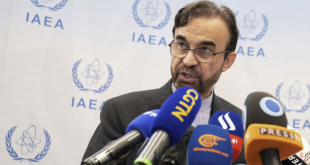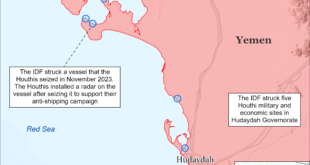 TEHRAN (FNA)- American investigative journalist, Gareth Porter said the UN nuclear watchdog is divided on authenticity of the contents of a laptop western intelligence agencies have presented as a proof for Iran’s diversion from peaceful nuclear activities.
TEHRAN (FNA)- American investigative journalist, Gareth Porter said the UN nuclear watchdog is divided on authenticity of the contents of a laptop western intelligence agencies have presented as a proof for Iran’s diversion from peaceful nuclear activities.
What follows is the text of a press tv interview with Porter.
In 2004, US intelligence presented the UN nuclear watchdog with a series of documents, which the IAEA refers to as ‘alleged studies’. The documents are claimed as proof of an Iranian research program conducted in line with a secret nuclear weapons program and has served as prima facie evidence for passing the third round of UN Security Council resolutions against Iran
Raw Story has reported however, that a Vienna-based diplomatic source has spoken to them on condition of anonymity and said new evidence of possible fraud has upped the ante within the IAEA secretariat to distance the agency from the laptop allegations.
Director of International Atomic Energy Agency (IAEA) for Safeguards Department, Olli Heinonen referred to ‘correspondence’ related to Kimia Maadan- an Iranian company which the documents were allegedly stolen from- as ‘identical to that provided by Iran, with the addition of handwritten notes.’
Some IAEA officials began pressuring the agency to admit the documents were likely to be unauthentic after a copy of the Iranian letter was received which did not contain any handwritten notes.
Most of the documents, provided by an unknown source, are electronic files allegedly gathered from an Iranian researcher’s laptop – none of which bears ‘confidential’ or ‘top secret’ seals.
US investigative journalist and analyst Gareth Porter says there is an argument among the UN nuclear watchdog members about the authenticity of the documents.
Porter, in an article on the issue, cites discrepancies between the documents and a larger collection of documentation presented to the IAEA by Iran in response to the agency’s request for an explanation.
Press TV: In an IAEA report dated May 2008 and declassified in June, IAEA referred to a one-page undated flow sheet reportedly originated from the Iranian company, Kimia Maadan, what was it about? Why do you think the IAEA is distancing itself from it?
Porter: Well first of all I am not sure that the IAEA has publicly distanced itself from this document or other so-called laptop documents related to what IAEA has called the alleged studies of its supposed “Iran’s nuclear weapons program”, but this particular document is supposed to be a study for a purported uranium conversion facility, a bench-scale uranium conversion facility which supposedly the Kimia Maadan, this private Iranian firm was responsible for. It is one of the documents that has been cited as part of this overall collection to show Iran’s intention to study a nuclear weapons program
Press TV: We never have seen the document because they never publicized or published the document. So apparently, the document held by Iranians didn’t have the handwriting, while the one the IAEA had did?
Porter: The document you are referring to is being contested or it is a matter of dispute. It is a letter from an Iranian engineering firm to Kimia Maadan not the flow sheet you have been referring to. A letter dated May 2003. It is very significant and it served as the basis for a story I just did this week.
The handwriting was, as I was informed by a source who was briefed on its contents, was about the modifications to the Shahab-III missile and that it apparently could carry a payload that was interpreted as a nuclear weapon. What I learned from the IAEA report published in February 2008 and as Olli Heinonen referred to later was that the IAEA had two versions of the document, one with and another without handwriting on them.
Some people within the IAEA tried to get the IAEA to distance itself from this document. However, unfortunately the IAEA has not publicly distanced itself from the documents so far.
Press TV: Why has your story not been covered by the US media? Particularly when it comes to forging the documents in the recent history of the US?
Porter: First of all, I think my story is against the mainstream of what is going on in the US when it comes to Iran’s nuclear program. The US media has been captive to its US government sources. They want to show that the IAEA is always objecting to Iran’s nuclear programs.
Press TV: You are not blaming the IAEA of course. You are saying that the media got it wrong when it comes to the evidence provided by IAEA, for example the enriched uranium from Niger.
Porter: The problem with the IAEA is that it is an agency that is deeply divided. First, there are those who want to get the IAEA to distance itself from the so-called laptop documents by US allies and those who stand by these documents for the sake of their credibility.
On the issue of previous forgeries, the Niger-gate issue that was based on forged documents that Iraq has been buying enriched uranium from Niger, IAEA chief, Mohamed ElBaradei was the first to blow the whistle on these documents and say that they were forgeries. He has the history of telling truths at the IAEA.
 Eurasia Press & News
Eurasia Press & News


